
What is water treatment?
Water treatment is the process of improving water quality by removing contaminants, pollutants, and harmful substances to make it safe for industrial, commercial, or domestic use. It involves physical, chemical, and biological methods, including filtration, disinfection, and electrochemical processes. Titanium anodes play a key role in electrochemical water treatment by enabling efficient oxidation, disinfection, and removal of organic/inorganic pollutants through advanced oxidation processes (AOPs) and electrochlorination.
Precision Development for Superior Performance
At Ehisen, we specialize in advanced coating solutions for titanium anodes, using precisely formulated precious metal solutions. With patented coating technology and a strong R&D capability, we continually optimize coating formulas based on customer feedback, helping to significantly reduce procurement costs. Our titanium anodes, including Iridium-Tantalum, Ruthenium-Iridium, Platinum-Coated, and MMO (Mixed Metal Oxide) anodes, offer exceptional durability, catalytic efficiency, and operational stability. These products are widely used in industries such as hydrogen production, electroplating, water treatment, and cathodic protection. We work closely with customers to advance coating technologies, delivering cost-effective and reliable electrochemical solutions.

Sodium Hypochlorite Generator
Sodium hypochlorite is a strong oxidizing agent and a strong disinfectant,It is produced by diaphragmless electrolysis by taking a dilute solution from a wide range of cheap industrial salts or seawater.In order to ensure the fresh texture of sodium hypochlorite and high activity,to ensure the disinfection effect,the device occurs while the sodium hypochlorite is added.
The reaction principle of the anode is to electrolyze the sodium chloride (pill sheet) put into the swimming pool.During the electrolysis, sodium hypochlorite is formed.The most suitable salt concentration is 3%-5%.The electrodes used in the sodium hypochlorite generator are plate electrodes and tube electrodes.

Titanium Anode For Electrolytic Wastewater Treatment
The titanium anode for electrolytic wastewater treatment is manufactured using highly corrosion-resistant titanium material, coated with ruthenium oxide or iridium. The composition of the coating plays a crucial role in both the chlorine production efficiency and the lifespan of the cell.
The electrodes for saline electrolysis cells are made from high-purity solid titanium plates, baked with noble metal oxide coating to ensure the long lifespan of the cell, providing cleaner and healthier water, and facilitating electrode cleaning if needed.

Titanium Electrodes For Swimming Pool Disinfection
Titanium electrodes for swimming pool disinfection are cutting-edge technology that ensures clean and safe swimming pool water. The electrode is designed to use the chemical properties of titanium to effectively disinfect water. This is an ideal solution for pool owners who prioritize the hygiene and well-being of their pool users.
Titanium electrodes work through an electrolysis process, which involves using an electric current to create a chemical reaction. When the electrodes are connected to a power source, the titanium reacts with water to produce important cleaning agents, similar to chlorine and bromine. These cleaners effectively kill bacteria, infectious diseases, and other microorganisms that may contaminate your pool water.

Ruthenium Iridium Titanium Electrode Rod
There is no precise industry definition of “mixed metal oxide”. Each supplier has a unique formulation of mixed metal oxide coatings. Generally speaking, mixed metal ruthenium oxide (RuO2) and iridium oxide (IrO2) are mainly used in cathodic protection applications.
The MMO coating’s low consumption rate allows the metal dimensions to remain constant during the operating life of the anode, providing a consistently low resistance anode. Usually used in seawater, brackish water, fresh water, carbon backfill, concrete and other environments.
Why Watertreatment is Critical
Water treatment is essential for ensuring safe, clean water for drinking, industrial use, and environmental protection. It removes harmful contaminants, prevents waterborne diseases, and supports sustainable water reuse. Effective treatment also helps industries comply with environmental regulations, reduces pollution, and conserves freshwater resources. Advanced technologies like titanium anodes enhance efficiency in electrochemical treatment, enabling cost-effective and eco-friendly solutions for wastewater purification and desalination. Investing in water treatment safeguards public health, supports industrial growth, and protects ecosystems for future generations.
Chapter 1:Titanium Anodes In Watertreatment
1.Sodium Hypochlorite Generator
Sodium hypochlorite generator:The equipment is a water treatment disinfection and sterilization equipment.The raw material of the equipment is salt water and produces sodium hypochlorite solution through electrolytic reaction.
Sodium hypochlorite (NaCIO) is a light yellow transparent liquid,with a pungent smell similar to chlorine gas,is a strong oxidizing agent.It has the ideal disinfection effect and bleaching deodorization function.
Sodium hypochlorite is a strong oxidizing agent and a strong disinfectant,It is produced by diaphragmless electrolysis by taking a dilute solution from a wide range of cheap industrial salts or seawater.In order to ensure the fresh texture of sodium hypochlorite and high activity,to ensure the disinfection effect,the device occurs while the sodium hypochlorite is added.
The reaction principle of the anode is to electrolyze the sodium chloride (pill sheet) put into the swimming pool.During the electrolysis, sodium hypochlorite is formed.The most suitable salt concentration is 3%-5%.The electrodes used in the sodium hypochlorite generator are plate electrodes and tube electrodes.
Products specifications
Current density | <1500A/㎡ |
Chlorine evolution potential | ≤1.2V or oxygen evolution potential ≥1.9V |
Polarizability | ≤40mV |
Life | 5 + years |
Intensive life testing | 1 mol/L2 HSO4,current density 20000A/㎡,temperature 40±2°C,strengthening electrolysis time ≥250 h |
Specifications | 50g/h,100g/h,200g/h,500g/h,1000g/h and other customized production |
2.Titanium Anode For Electrolytic Wastewater Treatment
The titanium anode for electrolytic wastewater treatment is manufactured using highly corrosion-resistant titanium material, coated with ruthenium oxide or iridium. The composition of the coating plays a crucial role in both the chlorine production efficiency and the lifespan of the cell.
The electrodes for saline electrolysis cells are made from high-purity solid titanium plates, baked with noble metal oxide coating to ensure the long lifespan of the cell, providing cleaner and healthier water, and facilitating electrode cleaning if needed.
Product Specifications:
Product Name | Titanium Anode for Electrolytic Wastewater Treatment |
Brand | Ehisen |
Base Material | Ti (Gr1, Gr2) |
Coating Material | IrO2, RuO2 |
Coating Thickness | 820μm |
Shape | Solid Plate |
Lifespan | 10000-18000 Hours |
Current Density | <300A/m2 |
Salt Concentration | 0.30.5% |
Size | Customizable |
3.Titanium Electrodes For Swimming Pool Disinfection
Titanium electrodes for swimming pool disinfection are cutting-edge technology that ensures clean and safe swimming pool water. The electrode is designed to use the chemical properties of titanium to effectively disinfect water. This is an ideal solution for pool owners who prioritize the hygiene and well-being of their pool users.
Titanium electrodes work through an electrolysis process, which involves using an electric current to create a chemical reaction. When the electrodes are connected to a power source, the titanium reacts with water to produce important cleaning agents, similar to chlorine and bromine. These cleaners effectively kill bacteria, infectious diseases, and other microorganisms that may contaminate your pool water.
Say goodbye to excessive disinfection by-products, pungent odors caused by excessive chlorine, eye irritation, hair damage, swimsuit fading and other problems. Common salt and electricity produce a consistent, right amount of pure chlorine solution to safely, easily and cost-effectively disinfect swimming pools
Performance Parameters
| Parameter | Value |
|---|---|
| Electrode Material | Titanium |
| Coating Type | Catalytic Coating |
| Corrosion Resistance | Excellent |
| Service Life | 10+ years |
Technical Specifications
| Parameter | Value |
|---|---|
| Input Voltage | 110-240 V |
| Power Consumption | 60 W |
| Water Flow Rate | 10-20 liters per minute |
Economic Indicators
| Indicator | Value |
|---|---|
| Initial Investment Cost | $500-$1000 |
| Maintenance Cost | $100 per year |
| Energy Consumption | Low |
4.Ruthenium Iridium Titanium Electrode Rod
Ruthenium Iridium Titanium electrode Rod or electrode wire is coated with a ruthenium-iridium metal oxide coating as an electronic anti-corrosion anode,Anode Rod uses titanium as the base material.
1. Adding a certain proportion of tin can reduce the depth of cracks on the surface of the anode coating, improve the electrocatalytic activity and corrosion resistance of the oxide, increase the enhanced electrolysis life of the anode, which can reach more than 10 years, and avoid the frequent replacement of traditional sacrificial anode rods. Poor user experience;
2. The ruthenium oxide coating has a certain inhibitory effect on the oxidizing substances produced by bacteria in the water during the electrolysis reaction. It has a certain effect on the “odor” caused by long-term use of the water tank.
3. Since the protective current requirements required by cathode materials at different temperatures are different, constant current cannot meet the requirements, and the constant voltage control system is complex and has poor stability. Moreover, the current required for electronic corrosion resistance is very small.Controlling the constant tank pressure approach is easy and useful. It can take advantage of the characteristic that the resistivity of water decreases with the increase of temperature. When the water temperature is low, the output protection current is small in size and high in water temperature. Output protection current, so that the material can play a good protective role under high and low temperature conditions.
Product Parameters:
Grade | CHEMICAL COMPOSITION (weight %, max or range) | MECHANICAL PROPERTIES (min) | |||||||||||
ASTM | UNS | N | C | H | Fe | O | Ti | Other element (each) | Other element (total) | Tensile | Yield | El. | Red. |
Mpa | Mpa | % | % | ||||||||||
GR 1 | R50250 | 0.03 | 0.08 | 0.015 | 0.2 | 0.18 | Bal. | <0.1 | <0.4 | 240 | 138 | 24 | 30 |
GR 2 | R50400 | 0.03 | 0.08 | 0.015 | 0.3 | 0.25 | Bal. | <0.1 | <0.4 | 345 | 275 | 20 | 30 |
5.Ballast Water Titanium Electrodes
Ballast water titanium electrodes are state-of-the-art electrodes used in ballast water treatment systems. It is designed to effectively disinfect and treat ballast water to prevent the spread of harmful aquatic organisms and pathogens. The electrodes are made of high-quality titanium material to ensure durability and long-lasting performance.
The introduction of aquatic invasive organisms into non-native waters via ballast water is a serious challenge facing the entire maritime industry. Our ballast water treatment electrodes and electrochemical ballast water treatment technology provide reliable solutions for new builds and retrofits. These systems, featuring titanium electrodes for ballast water, help vessels comply with the world’s most stringent ballast water regulations. With our advanced titanium electrode anodes for ballast water, we ensure effective ballast water disinfection and robust protection against invasive species.
Products parameters
| Parameter | Value |
|---|---|
| Electrode Material | Titanium |
| Electrical Voltage | 5-10 volts |
| Power Consumption | Depends on ballast system size |
| Disinfection Efficiency | Above 99.9% |
| Working Temperature | 5-40°C |
| Operating Pressure | 0.2-0.6 MPa |
| Water Flow Rate | Depends on ballast system size |
Chapter 2:Watertreatment Methods
Water treatment is the process of removing pollutants from water by physical, chemical, and biological means to achieve specific water quality requirements
Physical means
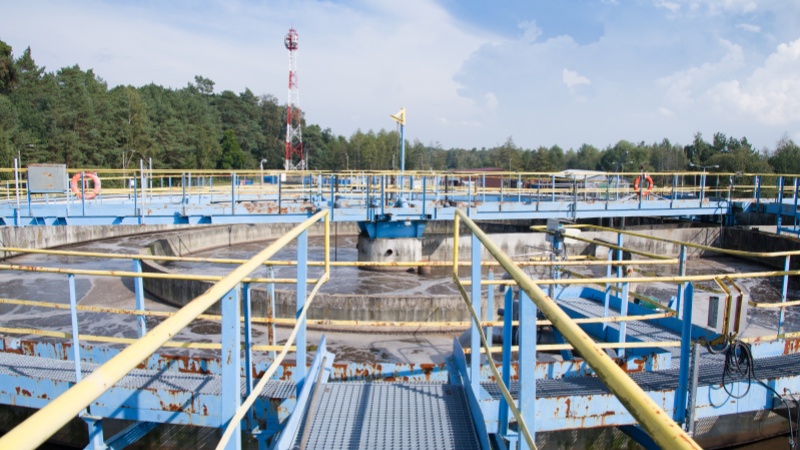
Precipitation and Filtration
Sedimentation: The use of gravity to make the suspended solids in water (such as sediment, impurity particles) naturally settle, divided into natural sedimentation and coagulation sedimentation (need to add coagulants). Filtration: The quartz sand, activated carbon, non-woven cloth and other filter media to retain suspended solids and colloids in the water, commonly used in drinking water pre-treatment.
Centrifugal separation
Using centrifugal force to separate suspended matter or emulsified oil with high density in wastewater, applicable to wastewater with high concentration of suspended matter (e.g. oily wastewater).
Membrane separation technology
Reverse osmosis (RO): removes dissolved salts, organic matter and microorganisms from water through a semi-permeable membrane, commonly used in the preparation of pure water. Ultrafiltration (UF)/Microfiltration (MF): Separation of macromolecules, colloids and bacteria in water, with a lower precision than reverse osmosis. Nanofiltration (NF): Between ultrafiltration and reverse osmosis, removes some low molecular organic matter and divalent ions.
Evaporation and Distillation
Evaporation and condensation of water by heating to remove dissolved salts and impurities, suitable for high salt wastewater treatment or pure water preparation.
Chemical means
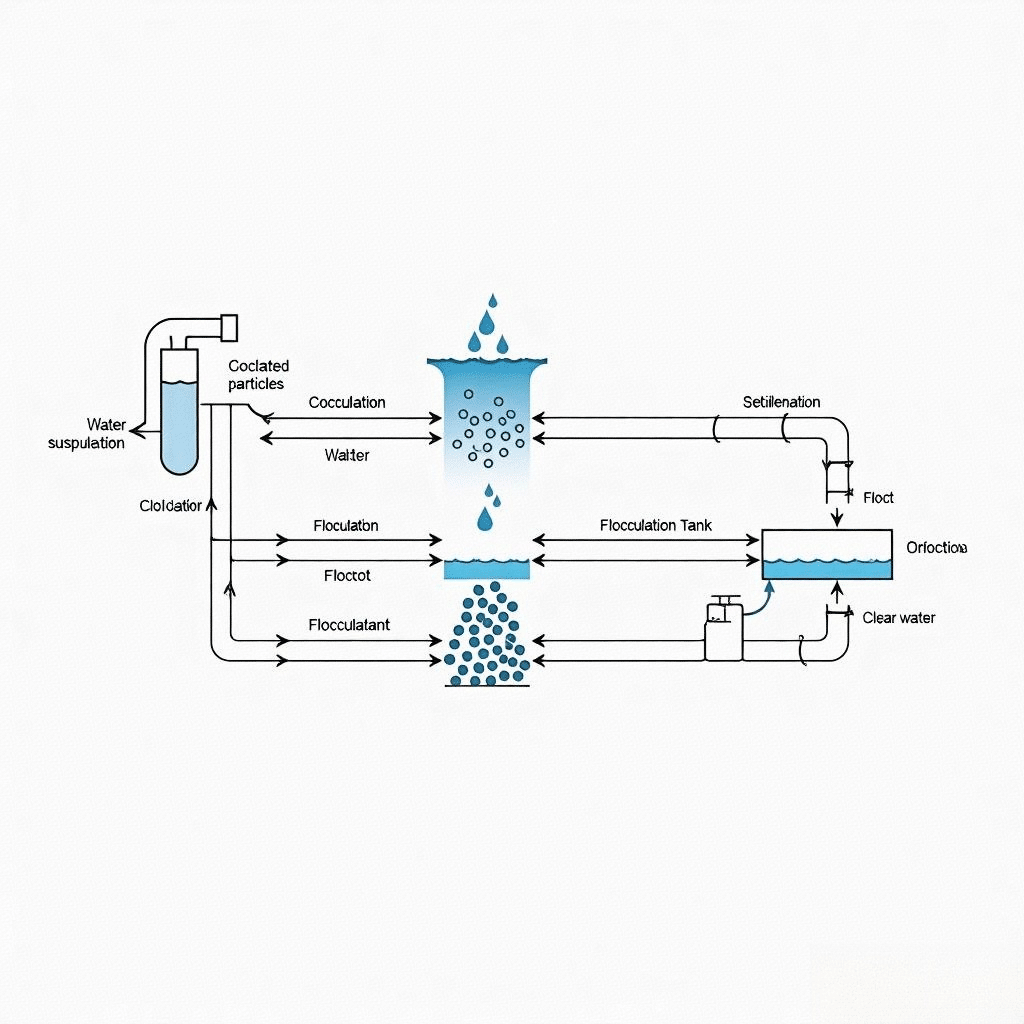
Coagulation and flocculation
Coagulants (e.g. polymerized aluminum chloride, polyacrylamide) are added to make colloidal particles in the water gather into large flocs, which are easy to be precipitated or filtered.
Disinfection
Chlorine disinfection: Adding chlorine gas, sodium hypochlorite, etc. to kill bacteria and viruses is the most commonly used method of disinfecting drinking water. Ultraviolet disinfection: use ultraviolet light to destroy microbial DNA, no residue, suitable for chlorine-sensitive scenes (such as the food industry). Ozone disinfection: strong oxidation kills microorganisms and degrades organic matter, commonly used in deep treatment.
Neutralization and conditioning
Adjust the pH value of wastewater (e.g. neutralize alkaline wastewater with acid, neutralize acidic wastewater with alkali) to meet the requirements of subsequent treatment.
Oxidation and reduction
Chemical oxidation: Add oxidizing agent (e.g. potassium permanganate, hydrogen peroxide) to degrade organic matter (e.g. phenols, pesticides). Reduction treatment: using reducing agent (such as iron powder) to remove heavy metal ions (such as hexavalent chromium reduced to trivalent chromium).
Chemical precipitation
Addition of precipitants (e.g. hydroxide, sulfide) to make heavy metal ions (e.g. copper, nickel) to form a precipitate to remove.
Biological method
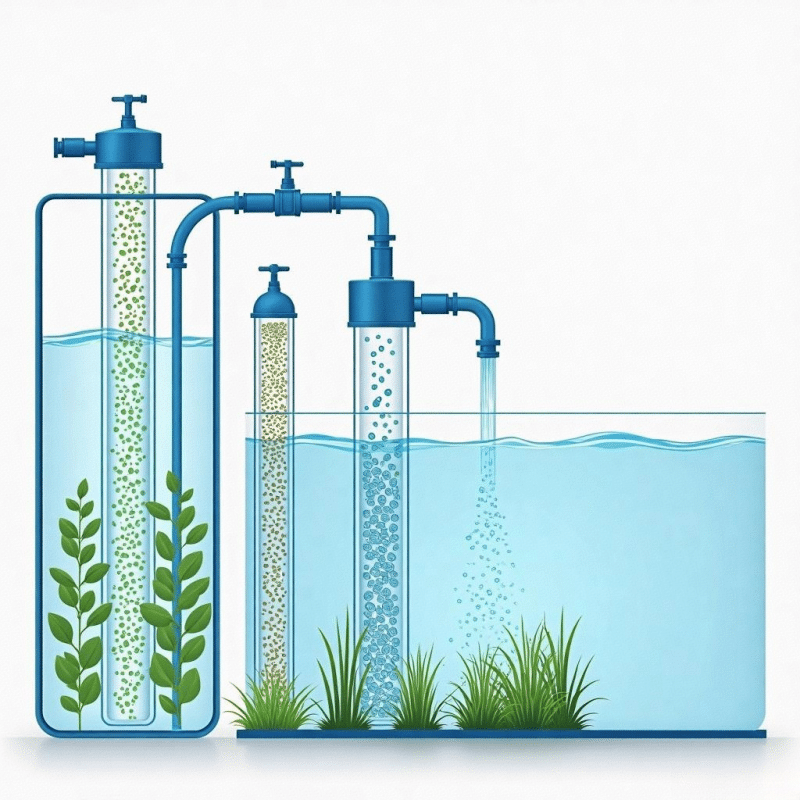
Aerobic biological treatment
Activated sludge method: through aeration to make microorganisms (sludge) degradation of organic matter, common processes are aeration tank, SBR (sequencing batch reactor). Biofilm method: microorganisms attach to the surface of the filler to form a membrane, such as biofilter, biological contact oxidation method, suitable for small and medium-sized sewage treatment.
Anaerobic biological treatment
Under anaerobic conditions, anaerobic bacteria decompose highly concentrated organic matter (e.g., sludge, fecal matter) to produce biogas (methane), while reducing the concentration of pollutants.
Biological Nitrogen and Phosphorus Removal
Removal of nitrogen by nitrification – denitrification reaction and removal of phosphorus by over-absorption of phosphorus by phosphorus-collecting bacteria is one of the core processes in wastewater treatment plants.
Other modalities
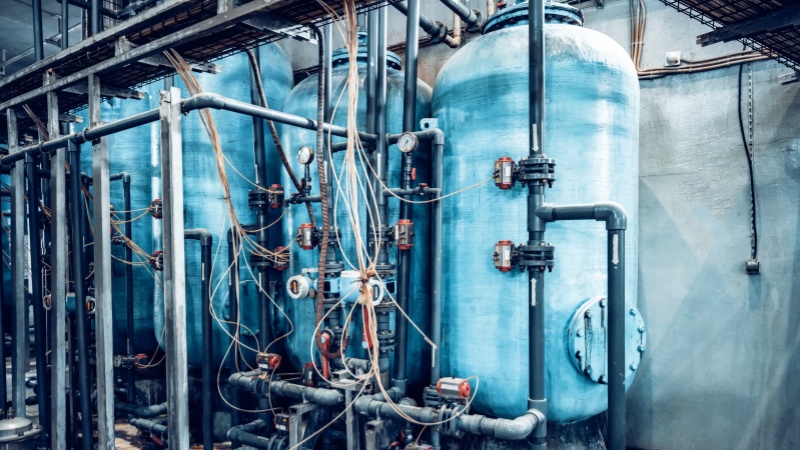
Activated carbon adsorption
The porous structure of activated carbon is used to adsorb organic matter, pigment and odor in water, which is commonly used in the deep treatment of drinking water.
Ion exchange
Remove calcium and magnesium ions in water through ion exchange resin (water softening), or remove heavy metals and radioactive ions.
Electrodialysis
The use of electric field to make ions pass through the ion exchange membrane, separation of electrolytes in water, suitable for desalination of brackish water or wastewater desalination.
Advanced Oxidation Technologies (AOPs)
Such as combined ozone – ultraviolet light, Fenton oxidation (hydrogen peroxide + ferrous ions), generating hydroxyl radicals (・OH) to degrade difficult-to-degrade organic substances (e.g. antibiotics, dyes).
Desalination: Removal of salt by reverse osmosis, distillation and other technologies to solve the problem of shortage of fresh water resources.
Sludge treatment: dewatering, anaerobic digestion, incineration, etc. to reduce the volume of sludge and realize resource utilization.
Cooling water treatment: add corrosion inhibitors and scale inhibitors to prevent equipment scaling and corrosion, combined with filtration and sterilization to control microbial reproduction.
Chapter3:Titanium anodes in water treatment applications
I. The core role of titanium anode in water treatment

Catalytic carrier for electrochemical oxidation reaction
As an anode material, it triggers oxidation reaction under the action of electric current, generating strong oxidizing substances (such as ClO-, OH hydroxyl radical, O₃, etc.), degrading organic matter, killing microorganisms or removing heavy metals.
Stable and efficient electrode performance
Titanium matrix is acid and alkali resistant, corrosion resistant, suitable for long-term use in complex water quality (e.g., high salt, high chlorine environment); surface coatings (e.g., IrO₂, RuO₂, TiO₂, etc.) optimize the catalytic activity, reduce energy consumption and improve the selectivity of the reaction.
Involved in a variety of electrochemical processes
Including electrocatalytic oxidation, electroflocculation, electrolytic disinfection, heavy metal removal, seawater bromination/salt extraction, etc., to achieve pollutant removal or resource recovery through different reaction pathways.
II. Scope of application

1. Water disinfection and sterilization electrolysis to prepare hypochlorite:
In water containing chlorine ions (e.g. tap water, recycled water), titanium anode electrolysis generates ClO- (hypochlorite), replacing the traditional chlorine dosage to avoid residual chlorine problem, suitable for swimming pool water, hospital wastewater, aquaculture water disinfection. Electrolysis of seawater/salt water disinfection: In the treatment of ballast water of ships and pre-treatment of seawater desalination, titanium anode electrolysis of seawater generates ClO- and Cl₂, killing foreign microorganisms and preventing bio-adhesion.
2. Organic pollutant degradation industrial wastewater treatment:
For difficult to degrade organic substances (such as phenols, dyes, pesticides, antibiotics), titanium anode generates・OH radicals through electrocatalytic oxidation (advanced oxidation technology), which mineralizes macromolecules of organic substances into CO₂ and H₂O, which is suitable for chemical industry, pharmacy and dyeing and printing wastewater. Soil remediation drench treatment: degradation of volatile organic compounds (VOCs) and persistent organic pollutants (POPs) in groundwater.
3. Heavy metal removal by electrodeposition/reduction:
In wastewater containing heavy metal ions (e.g. Cu²⁺, Ni²⁺, Cr³⁺), titanium anode cooperates with cathodic reduction, so that the heavy metal ions are precipitated out at the cathode or hydroxide precipitation is formed, which is commonly used in the treatment of electroplating and mining wastewater.
4. Electroflocculation and descaling Electroflocculation process:
Titanium anode (or iron/aluminum anode) electrolysis dissolved to produce Fe³⁺, Al³⁺, as a flocculant adsorption of suspended matter and colloid, while the anodic oxidation removes part of the organic matter, suitable for oily wastewater, high turbidity water treatment. Anti-scaling treatment: in circulating cooling water system, change ionic form through electrolysis to inhibit the formation of calcium and magnesium scale.
5. Desalination and resource recovery chlor-alkali industry supporting:
Titanium anode is used for electrolysis of brine to prepare Cl₂ and NaOH, providing chemicals for the pretreatment of seawater desalination (e.g. boron removal and hardness removal). Salt lake lithium/bromine extraction: selective extraction of valuable elements from brine by electrochemical methods, the corrosion resistance of titanium anode guarantees long-term stable operation.
III. Main methods and principles
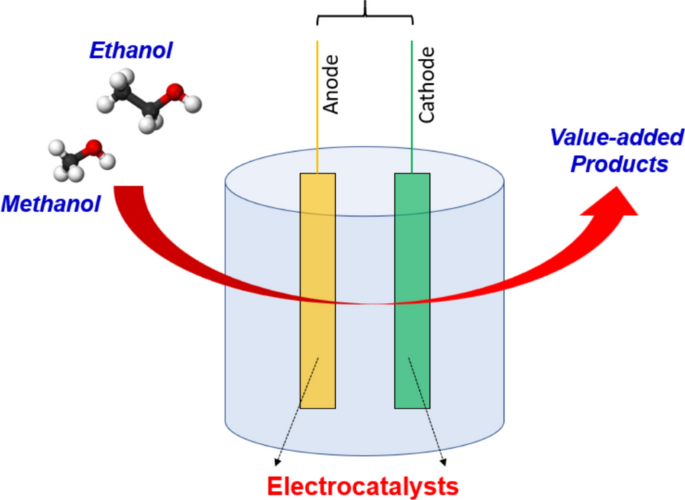
1. Electrocatalytic oxidation (ECO) principle direct oxidation:
Pollutants directly lose electrons on the surface of titanium anode to be oxidized (e.g. organic matter → CO₂), the reaction rate depends on the contact efficiency between pollutant and electrode. Indirect oxidation: the anode catalyzes the generation of intermediate products (e.g., ・OH, ClO-) from water or electrolytes (e.g., Cl-) to indirectly oxidize pollutants: chlorine system: Cl- → Cl₂ → ClO- (disinfects / oxidizes organics); non-chlorine system: H₂O → OH (strong oxidizing radicals, non-selective degradation of organic matter, such as IrO₂ coating anode catalytic production of OH).
2. Electroflocculation (EF) principle
Titanium anode (if soluble anode, such as iron/aluminum-based titanium anode) electrolysis releases Fe²⁺/Al³⁺, hydrolysis generates Fe (OH)₃/Al (OH)₃ flocs, adsorption of suspended solids; at the same time, anodic oxidation to remove part of the organic matter, cathode generates H₂ microbubbles to assist the air flotation.
3. Electrolytic disinfection principle
In Cl-containing water, titanium anode reaction: 2Cl- – 2e- → Cl₂↑, Cl₂ dissolved in water to form HClO and ClO-, destroying the microbial cellular structure; if the water is not enough Cl-, a small amount of NaCl can be added to enhance the conductivity. If there is insufficient Cl- in the water, a small amount of NaCl can be added to enhance the conductivity and disinfection efficiency.
4. Heavy metal electrodeposition principle
Titanium anode as an inert electrode, provide oxidation reaction place (such as oxygen precipitation reaction: 2H₂O – 4e- → O₂↑ + 4H⁺), cathode reduction reaction (such as Mⁿ⁺ + n e- → M↓), so that the heavy metal ions precipitated at the cathode or the heavy metal ions precipitated at the cathode or the heavy metal ions precipitated at the cathode or the heavy metal ions precipitated at the cathode, or the heavy metal ions precipitated at the cathode. ions are precipitated at the cathode or form hydroxide precipitates (pH adjustment is required).
5. Key role of coating materials
Active coatings: IrO₂, RuO₂ coatings promote chlorine precipitation (low overpotential of chlorine precipitation), which is suitable for disinfection and chlorine wastewater treatment; TiO₂/BDD (boron doped diamond) coating promotes・OH generation, which is suitable for oxidation of hard-to-degraded organic matter. Dimensional stability: Titanium matrix does not participate in the reaction, only as a conductive skeleton, the coating is wear-resistant, corrosion-resistant, and prolongs the life of the electrode (traditional graphite / lead anodes are prone to wear and tear).
IV.Advantages and limitations

Advantages:
High corrosion resistance to high salt and strong acid/alkali environments;
High catalytic efficiency, customized coatings to match specific pollutants;
High degree of automation, easily coupled with other processes (e.g. membrane treatment, biological treatment).
Limitations:
High initial cost (expensive coating materials);
High concentration of suspended matter tends to clog the electrode surface, pre-treatment is required;
Energy consumption is related to current density and reaction time, process parameters need to be optimized.
Chapter4:Application of titanium anode in sodium hypochlorite generator

I. The core role of titanium anode
Titanium anode is the key component of sodium hypochlorite generator, and its core role is reflected in the following three aspects
Catalytic reaction of anode, efficient generation of chlorine gas
As anode material, the metal oxide coating (such as IrO₂, RuO₂, TiO₂, etc.) on the surface of titanium can significantly reduce the overpotential of chlorine ion (Cl-) oxidized to chlorine gas (Cl₂), improve the efficiency of chlorine precipitation reaction, and reduce the consumption of electric energy.
Corrosion resistance to ensure long-term stable operation
Titanium itself has strong resistance to chlorine corrosion, and is not easy to be corroded in the strong oxidizing electrolyte containing Cl-, ClO-, which avoids the problems of short service life and reduced efficiency caused by corrosion of traditional metal (e.g., iron, graphite) anodes and ensures the long-term reliable operation of the equipment.
Conductive and structural support
Titanium substrate has both good electrical conductivity and mechanical strength, which provides a stable carrier for the coating and maintains the reaction area and current distribution uniformity on the electrode surface during electrolysis.
II.the principle of the method
Electrode Reaction Mechanism
Anodic Oxidation Reaction (Taking IrO2 Coating as an Example):

The active sites in the coating (such as the Ir+/Ir− redox pair) catalyze the loss of electrons from Cl−to generate Cl2. The porous structure of the coating increases the reaction surface area, improving current efficiency (typically reaching 85%~95%).
Key Roles of the Coating:
Reduction of Oxygen Evolution Overpotential: Compared to a titanium anode, the coating allows the oxygen evolution reaction to proceed at a lower voltage, reducing energy consumption by approximately 20%~30%.
Suppression of Side Reactions: Prevents the occurrence of the oxygen evolution reaction at the anode, minimizing wasted energy and the inhibition of Cl2 generation by oxygen.
Material Properties and Compatibility
Advantages of Titanium Substrate:
Low density and high strength, suitable for processing into mesh, plate, and other electrode forms to optimize electrolyte flow.
Strong chemical stability, remaining inert in electrolytes with pH 2–12. It only reacts with highly corrosive media such as aqua regia and hydrofluoric acid, making it fully compatible with sodium hypochlorite electrolysis environments.
Selection of Coating Components:
IrO₂ Coating: Resistant to high current density, suitable for high-salinity electrolytes, with a long lifespan (5–8 years).
RuO₂ Coating: Lower oxygen evolution overpotential, high initial efficiency, but slightly weaker corrosion resistance, making it suitable for medium- to low-salinity applications.
Chapter5:Titanium-based lead dioxide anode
 With the continuous development of industry and science and technology, traditional anode materials are increasingly showing their limitations. For example, platinum is too expensive; graphite has unsatisfactory corrosion resistance and low strength in the chlor-alkali industry and oxygen evolution system; lead alloy anodes have shortcomings such as poor corrosion resistance, low electrocatalytic performance, and high power consumption. Starting from the requirements for so-called “green materials” such as energy saving, consumption reduction, and no pollution, people hope to find new anodes with long life, high electrochemical catalytic performance, and no secondary pollution.
With the continuous development of industry and science and technology, traditional anode materials are increasingly showing their limitations. For example, platinum is too expensive; graphite has unsatisfactory corrosion resistance and low strength in the chlor-alkali industry and oxygen evolution system; lead alloy anodes have shortcomings such as poor corrosion resistance, low electrocatalytic performance, and high power consumption. Starting from the requirements for so-called “green materials” such as energy saving, consumption reduction, and no pollution, people hope to find new anodes with long life, high electrochemical catalytic performance, and no secondary pollution.
In an oxygen evolution environment, people have developed lead dioxide electrodes. Pb0a: is a non-stoichiometric compound that is deficient in oxygen and contains excess lead. It has various crystal forms. β-PbÛ, which is plated by anodic electrodeposition, has anti-oxidation properties. Oxidation, corrosion resistance (high stability in strong acid HSO or HN0), high oxygen overpotential, good conductivity, strong binding force, strong oxidation ability during electrolysis in aqueous solution, and the ability to pass large currents, etc., are very Has development prospects. It has been widely used in electroplating, smelting, wastewater treatment, cathode anti-corrosion and other fields, and cannot be replaced by many other electrode materials (such as DSA, lead, titanium platinum plating).
In the early days, a layer of β-Pb02 was directly deposited on the Ti plate after pretreatment. The contact resistance between the base and the active layer of this kind of electrode is large, and during use of the electrode, due to the high resistance layer of TiO2 formed between the base and the interface, the anode potential increases, the coating falls off, and the electrode quickly loses its use value. . In order to ensure good bonding performance between the substrate and the surface coating and thus ensure good conductivity and corrosion resistance of the electrode, scholars have developed a new type of lead dioxide electrode. Compared with the old lead dioxide electrode, the new lead dioxide electrode mainly An anti-passivation bottom layer is compounded between the substrate and the β-Pb02 coating, and some also add an intermediate layer on the bottom layer. The new lead dioxide electrode consists of a titanium substrate, a bottom layer, an intermediate layer and a surface layer. The lead dioxide electrode of this structure has the following advantages: (1) It can be used under high current density; (2) It has high current efficiency; (3) It has good corrosion resistance and lifespan.
Performance characteristics of titanium-based lead dioxide electrodes: Titanium-based lead dioxide electrodes have the characteristics of high oxygen evolution overpotential, strong oxidation ability, good corrosion resistance, good conductivity, and can pass large currents during electrolysis in aqueous solution. It has good chemical stability and high hardness, but poor mechanical strength and brittleness. It has better performance in sulfuric acid medium. It is widely used as an insoluble anode in the electrolysis industry, sewage treatment, degradation of COD, and removal of ammonia nitrogen.
Why use lead dioxide anodes
Wastewater pollutants: chemical oxygen demand (COD), ammonia nitrogen (NH3-N), total nitrogen (TN), total phosphorus (TP). Key heavy metal pollutants: lead, mercury, cadmium, chromium, and arsenic.

COD (Chemical Oxygen Demand), also called chemical oxygen demand, is a chemical method used to measure the amount of raw substances that need to be oxidized in water samples; wastewater, wastewater treatment plant effluent and polluted water can be oxidized by strong oxidants matter(generally organic matter); in the discussion of river pollution and the nature of industrial wastewater, as well as the operation and management of wastewater treatment plants, it is an important and quickly measured organic matter pollution parameter.Often represented by the symbol COD: under certain conditions, when a certain strong oxidant is used to treat a water sample, the amount of oxidant consumed:
It reflects the degree of material pollution in the water. The greater the chemical oxygen demand, the more severe the pollution by organic matter in the water: COD is expressed in mg/L. The COD value detected by the water quality monitoring instrument can be divided into five categories. Among them, Category 1 and Category 2 COD ≤ 15mg/L can basically meet drinking water standards. Water with a value greater than Category 2 cannot be used as drinking water. Category 3 COD ≤ 20mg/L, Category 4 COD ≤ 30mg/L, Category 5 COD ≤ 30mg/L, and Category 5 COD ≤ 30mg/L. COD ≤ 40 mg/L is considered polluted water quality. The higher the COD value, the more severe the pollution;

COD degradation effects and conclusions of titanium anodes coated with different systems
Electrode type | Inlet water COD/mg.L-1 | Effluent C0D/mg.L-1 |
Titanium based iridium ruthenium | 125 | 67 |
Titanium based iridium tantalum | 125 | 56 |
Titanium-based iridium ruthenium tin | 125 | 56 |
Tin antimony intermediate layer titanium based lead dioxide | 125 | 47 |
Composite intermediate layer titanium-based dimorphic lead | 125 | 21 |
It can be seen that under the same incoming water and test conditions, the titanium-based composite intermediate layer lead dioxide electrode has the best effect on sewage treatment. Both are titanium-based lead dioxide, and the electrode treatment effect of the titanium-based lead dioxide composite intermediate layer is better than that of the electrode with a tin-antimony intermediate layer titanium-based lead dioxide. The analysis reason is: the titanium-based composite intermediate layer lead dioxide has a higher oxygen evolution potential than other electrodes, which can effectively prevent the occurrence of side reactions during the electrolysis process. The current efficiency is high, so the treatment effect is good;
On-site data for processing 200m3/h printing and dyeing wastewater
Electrolysis time (min) | Ammonia nitrogen (mg/L) | COD (mg/L) | Chroma |
0 | 71.26 | 592 | 250 |
15 | 50.26 | 468 | 100 |
30 | 38.64 | 368 | 30 |
60 | 10.94 | 276 | 8 |
90 | 0.22 | 140 | / |
120 | <0.5 | 37 | / |
From the above data, it can be seen that the composite intermediate layer lead dioxide anode has a relatively obvious effect in degrading COD in printing and dyeing wastewater. Through stepped cycle electrolysis, high-concentration COD can be reduced by 50 ppm in the national emission standard within 2 hours of treatment.

